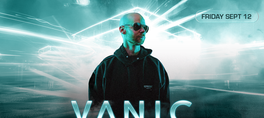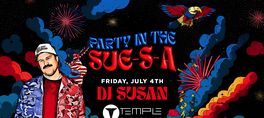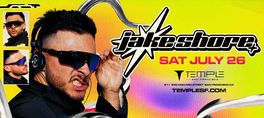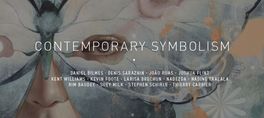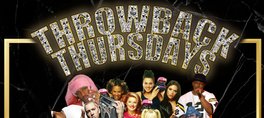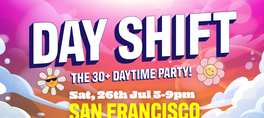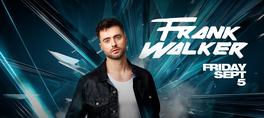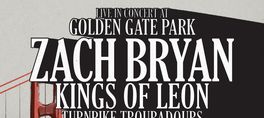As technology becomes increasingly immersive, how can our sensing self be affected? Artists can envision ways to craft entirely new kinds of experiences that trigger the senses in unexpected ways. And scientists anticipate the possibility of new forms of rehabilitation and medical care. Tonight, through an array of projects emerging from science and the arts, we’ll consider the many ways our perception can be expanded and transformed through emerging technologies. From research that uses VR headsets to improve eyesight to artworks that use those same headsets to transcend imaginable vision, emerging technologies can trigger surprising perceptual reconfigurations both of the fleeting and rehabilitating kind.
PRESENTERS
Kanbar Forum
8:00–9:30 p.m.
Developed by UCSF’s Neuroscape Lab, the Glass Brain translatesd brain activity into stunning, real-time, 3-D images. As the most advanced brain visualization tool of its kind, its medical potential is vast. However, since its debut in 2014, it has emerged as an inspiration and tool for artists. Tonight, hear from Neuroscape’s founder, Dr. Adam Gazzaley, about the development of the Glass Brain and where it fits into Neuroscape’s cutting-edge approach to the fusing of technology and neuroscience. Gazzaley will be joined by Rebecca Allen and Refik Anadol, two internationally acclaimed artists who recently created immersive works using the Glass Brain. Each will discuss the whole of their work, highlighting vastly different approaches that intersect in their inventive and deliberate pursuits of new technologies and what drew them to the Glass Brain’s interior imaging.
Rebecca Allen is an artist whose work spans over three decades takes the form of virtual and augmented reality art installations, experimental video, and large-scale performances. Allen’s work is exhibited internationally and is part of the permanent collection of the Centre Georges Pompidou in Paris and the Whitney Museum and Museum of Modern Art in New York. She has collaborated with artists such as Kraftwerk, Mark Mothersbough (Devo), John Paul Jones (Led Zeppelin), Peter Gabriel, Carter Burwell, Twyla Tharp, Joffrey Ballet, and Nam June Paik. She was founding Chair of the UCLA Department of Design Media Arts and is currently a professor there. She was founding director of two Nokia Research labs and has led research and creative teams at UCLA, MIT Media Lab Europe, and elsewhere.
Refik Anadol is a media artist and designer working in the fields of live audio/visual performance, immersive installations, and architectural photography. His works explore physical space by creating a relationship between architecture and media arts. He holds an MFA from University of California, Los Angeles in media arts, an MFA from Istanbul Bilgi University in visual communication design as well as a BA (summa cum laude) in photography and video. His site-specific audio/visual performances have been seen at countless global institutions including Walt Disney Concert Hall, Hammer Museum, International Digital Arts Biennial Montreal (Canada), and Ars Electronica Festival (Austria).
Dr. Adam Gazzaley is a professor in neurology, physiology and psychiatry at UCSF and is the founder and Executive Director of Neuroscape, a translational neuroscience center engaged in technology creation and scientific research. Using a range of state-of-the art technologies, he designs and develops brain assessment and optimization tools to impact education, wellness, and medicine practices. Dr. Gazzaley is co-founder and Chief Science Advisor of Akili Interactive Labs, a company developing therapeutic video games. He is a scientific advisor for over a dozen technology companies and on the Science Board of the President's Council on Fitness, Sports & Nutrition. Dr. Gazzaley has authored over 125 scientific articles, and delivered over 535 presentations around the world.
ONGOING EXPERIENCES
6:30-9:30
Chocolate (Tyler Hurd)
This VR music video experience using the song Chocolate by Giraffage sets you in a cat-centric world of sparkling colorful chrome with a tribe of people doing a ritualistic dance with you—their robot god— providing them with their precious resource, cute lil' chrome kitties.
Inside (Rebecca Allen)
In this work, artist Rebecca Allen explores the inner world of the brain, the connection between virtual and real humans, and the sensation one experiences when immersed in artificial nature. Utilizing “found objects,” many elements that make up the virtual worlds were found by scavenging through online thrift stores, while the model of the brain was derived from MRI brain scans. Inside considers provocative questions around the uncanny ability of VR to confound our sensory perception while contemplating what happens to us when inside virtual worlds.
Glass Brain
This is a Unity3D brain visualization that displays source activity and connectivity, inferred in real-time from a high-density EEG. This allows the user to fly around the brain with a gamepad while seeing real-time live brain activity from someone wearing an EEG cap.
Vivid Vision
In use at nearly 100 eye clinics globally, Vivid Vision uses cutting edge VR hardware for inventive vision therapy exercises to improve patients’ sight. Focused on binocular vision problem like amblyopia, strabismus, and vergence disorders, Vivid Vision has created interactive and exciting vision tools that can strengthen users eyesight and are designed to be used both under a physician’s care and at home.
show less
PRESENTERS
Kanbar Forum
8:00–9:30 p.m.
Developed by UCSF’s Neuroscape Lab, the Glass Brain translatesd brain activity into stunning, real-time, 3-D images. As the most advanced brain visualization tool of its kind, its medical potential is vast. However, since its debut in 2014, it has emerged as an inspiration and tool for artists. Tonight, hear from Neuroscape’s founder, Dr. Adam Gazzaley, about the development of the Glass Brain and where it fits into Neuroscape’s cutting-edge approach to the fusing of technology and neuroscience. Gazzaley will be joined by Rebecca Allen and Refik Anadol, two internationally acclaimed artists who recently created immersive works using the Glass Brain. Each will discuss the whole of their work, highlighting vastly different approaches that intersect in their inventive and deliberate pursuits of new technologies and what drew them to the Glass Brain’s interior imaging.
Rebecca Allen is an artist whose work spans over three decades takes the form of virtual and augmented reality art installations, experimental video, and large-scale performances. Allen’s work is exhibited internationally and is part of the permanent collection of the Centre Georges Pompidou in Paris and the Whitney Museum and Museum of Modern Art in New York. She has collaborated with artists such as Kraftwerk, Mark Mothersbough (Devo), John Paul Jones (Led Zeppelin), Peter Gabriel, Carter Burwell, Twyla Tharp, Joffrey Ballet, and Nam June Paik. She was founding Chair of the UCLA Department of Design Media Arts and is currently a professor there. She was founding director of two Nokia Research labs and has led research and creative teams at UCLA, MIT Media Lab Europe, and elsewhere.
Refik Anadol is a media artist and designer working in the fields of live audio/visual performance, immersive installations, and architectural photography. His works explore physical space by creating a relationship between architecture and media arts. He holds an MFA from University of California, Los Angeles in media arts, an MFA from Istanbul Bilgi University in visual communication design as well as a BA (summa cum laude) in photography and video. His site-specific audio/visual performances have been seen at countless global institutions including Walt Disney Concert Hall, Hammer Museum, International Digital Arts Biennial Montreal (Canada), and Ars Electronica Festival (Austria).
Dr. Adam Gazzaley is a professor in neurology, physiology and psychiatry at UCSF and is the founder and Executive Director of Neuroscape, a translational neuroscience center engaged in technology creation and scientific research. Using a range of state-of-the art technologies, he designs and develops brain assessment and optimization tools to impact education, wellness, and medicine practices. Dr. Gazzaley is co-founder and Chief Science Advisor of Akili Interactive Labs, a company developing therapeutic video games. He is a scientific advisor for over a dozen technology companies and on the Science Board of the President's Council on Fitness, Sports & Nutrition. Dr. Gazzaley has authored over 125 scientific articles, and delivered over 535 presentations around the world.
ONGOING EXPERIENCES
6:30-9:30
Chocolate (Tyler Hurd)
This VR music video experience using the song Chocolate by Giraffage sets you in a cat-centric world of sparkling colorful chrome with a tribe of people doing a ritualistic dance with you—their robot god— providing them with their precious resource, cute lil' chrome kitties.
Inside (Rebecca Allen)
In this work, artist Rebecca Allen explores the inner world of the brain, the connection between virtual and real humans, and the sensation one experiences when immersed in artificial nature. Utilizing “found objects,” many elements that make up the virtual worlds were found by scavenging through online thrift stores, while the model of the brain was derived from MRI brain scans. Inside considers provocative questions around the uncanny ability of VR to confound our sensory perception while contemplating what happens to us when inside virtual worlds.
Glass Brain
This is a Unity3D brain visualization that displays source activity and connectivity, inferred in real-time from a high-density EEG. This allows the user to fly around the brain with a gamepad while seeing real-time live brain activity from someone wearing an EEG cap.
Vivid Vision
In use at nearly 100 eye clinics globally, Vivid Vision uses cutting edge VR hardware for inventive vision therapy exercises to improve patients’ sight. Focused on binocular vision problem like amblyopia, strabismus, and vergence disorders, Vivid Vision has created interactive and exciting vision tools that can strengthen users eyesight and are designed to be used both under a physician’s care and at home.
As technology becomes increasingly immersive, how can our sensing self be affected? Artists can envision ways to craft entirely new kinds of experiences that trigger the senses in unexpected ways. And scientists anticipate the possibility of new forms of rehabilitation and medical care. Tonight, through an array of projects emerging from science and the arts, we’ll consider the many ways our perception can be expanded and transformed through emerging technologies. From research that uses VR headsets to improve eyesight to artworks that use those same headsets to transcend imaginable vision, emerging technologies can trigger surprising perceptual reconfigurations both of the fleeting and rehabilitating kind.
PRESENTERS
Kanbar Forum
8:00–9:30 p.m.
Developed by UCSF’s Neuroscape Lab, the Glass Brain translatesd brain activity into stunning, real-time, 3-D images. As the most advanced brain visualization tool of its kind, its medical potential is vast. However, since its debut in 2014, it has emerged as an inspiration and tool for artists. Tonight, hear from Neuroscape’s founder, Dr. Adam Gazzaley, about the development of the Glass Brain and where it fits into Neuroscape’s cutting-edge approach to the fusing of technology and neuroscience. Gazzaley will be joined by Rebecca Allen and Refik Anadol, two internationally acclaimed artists who recently created immersive works using the Glass Brain. Each will discuss the whole of their work, highlighting vastly different approaches that intersect in their inventive and deliberate pursuits of new technologies and what drew them to the Glass Brain’s interior imaging.
Rebecca Allen is an artist whose work spans over three decades takes the form of virtual and augmented reality art installations, experimental video, and large-scale performances. Allen’s work is exhibited internationally and is part of the permanent collection of the Centre Georges Pompidou in Paris and the Whitney Museum and Museum of Modern Art in New York. She has collaborated with artists such as Kraftwerk, Mark Mothersbough (Devo), John Paul Jones (Led Zeppelin), Peter Gabriel, Carter Burwell, Twyla Tharp, Joffrey Ballet, and Nam June Paik. She was founding Chair of the UCLA Department of Design Media Arts and is currently a professor there. She was founding director of two Nokia Research labs and has led research and creative teams at UCLA, MIT Media Lab Europe, and elsewhere.
Refik Anadol is a media artist and designer working in the fields of live audio/visual performance, immersive installations, and architectural photography. His works explore physical space by creating a relationship between architecture and media arts. He holds an MFA from University of California, Los Angeles in media arts, an MFA from Istanbul Bilgi University in visual communication design as well as a BA (summa cum laude) in photography and video. His site-specific audio/visual performances have been seen at countless global institutions including Walt Disney Concert Hall, Hammer Museum, International Digital Arts Biennial Montreal (Canada), and Ars Electronica Festival (Austria).
Dr. Adam Gazzaley is a professor in neurology, physiology and psychiatry at UCSF and is the founder and Executive Director of Neuroscape, a translational neuroscience center engaged in technology creation and scientific research. Using a range of state-of-the art technologies, he designs and develops brain assessment and optimization tools to impact education, wellness, and medicine practices. Dr. Gazzaley is co-founder and Chief Science Advisor of Akili Interactive Labs, a company developing therapeutic video games. He is a scientific advisor for over a dozen technology companies and on the Science Board of the President's Council on Fitness, Sports & Nutrition. Dr. Gazzaley has authored over 125 scientific articles, and delivered over 535 presentations around the world.
ONGOING EXPERIENCES
6:30-9:30
Chocolate (Tyler Hurd)
This VR music video experience using the song Chocolate by Giraffage sets you in a cat-centric world of sparkling colorful chrome with a tribe of people doing a ritualistic dance with you—their robot god— providing them with their precious resource, cute lil' chrome kitties.
Inside (Rebecca Allen)
In this work, artist Rebecca Allen explores the inner world of the brain, the connection between virtual and real humans, and the sensation one experiences when immersed in artificial nature. Utilizing “found objects,” many elements that make up the virtual worlds were found by scavenging through online thrift stores, while the model of the brain was derived from MRI brain scans. Inside considers provocative questions around the uncanny ability of VR to confound our sensory perception while contemplating what happens to us when inside virtual worlds.
Glass Brain
This is a Unity3D brain visualization that displays source activity and connectivity, inferred in real-time from a high-density EEG. This allows the user to fly around the brain with a gamepad while seeing real-time live brain activity from someone wearing an EEG cap.
Vivid Vision
In use at nearly 100 eye clinics globally, Vivid Vision uses cutting edge VR hardware for inventive vision therapy exercises to improve patients’ sight. Focused on binocular vision problem like amblyopia, strabismus, and vergence disorders, Vivid Vision has created interactive and exciting vision tools that can strengthen users eyesight and are designed to be used both under a physician’s care and at home.
read more
PRESENTERS
Kanbar Forum
8:00–9:30 p.m.
Developed by UCSF’s Neuroscape Lab, the Glass Brain translatesd brain activity into stunning, real-time, 3-D images. As the most advanced brain visualization tool of its kind, its medical potential is vast. However, since its debut in 2014, it has emerged as an inspiration and tool for artists. Tonight, hear from Neuroscape’s founder, Dr. Adam Gazzaley, about the development of the Glass Brain and where it fits into Neuroscape’s cutting-edge approach to the fusing of technology and neuroscience. Gazzaley will be joined by Rebecca Allen and Refik Anadol, two internationally acclaimed artists who recently created immersive works using the Glass Brain. Each will discuss the whole of their work, highlighting vastly different approaches that intersect in their inventive and deliberate pursuits of new technologies and what drew them to the Glass Brain’s interior imaging.
Rebecca Allen is an artist whose work spans over three decades takes the form of virtual and augmented reality art installations, experimental video, and large-scale performances. Allen’s work is exhibited internationally and is part of the permanent collection of the Centre Georges Pompidou in Paris and the Whitney Museum and Museum of Modern Art in New York. She has collaborated with artists such as Kraftwerk, Mark Mothersbough (Devo), John Paul Jones (Led Zeppelin), Peter Gabriel, Carter Burwell, Twyla Tharp, Joffrey Ballet, and Nam June Paik. She was founding Chair of the UCLA Department of Design Media Arts and is currently a professor there. She was founding director of two Nokia Research labs and has led research and creative teams at UCLA, MIT Media Lab Europe, and elsewhere.
Refik Anadol is a media artist and designer working in the fields of live audio/visual performance, immersive installations, and architectural photography. His works explore physical space by creating a relationship between architecture and media arts. He holds an MFA from University of California, Los Angeles in media arts, an MFA from Istanbul Bilgi University in visual communication design as well as a BA (summa cum laude) in photography and video. His site-specific audio/visual performances have been seen at countless global institutions including Walt Disney Concert Hall, Hammer Museum, International Digital Arts Biennial Montreal (Canada), and Ars Electronica Festival (Austria).
Dr. Adam Gazzaley is a professor in neurology, physiology and psychiatry at UCSF and is the founder and Executive Director of Neuroscape, a translational neuroscience center engaged in technology creation and scientific research. Using a range of state-of-the art technologies, he designs and develops brain assessment and optimization tools to impact education, wellness, and medicine practices. Dr. Gazzaley is co-founder and Chief Science Advisor of Akili Interactive Labs, a company developing therapeutic video games. He is a scientific advisor for over a dozen technology companies and on the Science Board of the President's Council on Fitness, Sports & Nutrition. Dr. Gazzaley has authored over 125 scientific articles, and delivered over 535 presentations around the world.
ONGOING EXPERIENCES
6:30-9:30
Chocolate (Tyler Hurd)
This VR music video experience using the song Chocolate by Giraffage sets you in a cat-centric world of sparkling colorful chrome with a tribe of people doing a ritualistic dance with you—their robot god— providing them with their precious resource, cute lil' chrome kitties.
Inside (Rebecca Allen)
In this work, artist Rebecca Allen explores the inner world of the brain, the connection between virtual and real humans, and the sensation one experiences when immersed in artificial nature. Utilizing “found objects,” many elements that make up the virtual worlds were found by scavenging through online thrift stores, while the model of the brain was derived from MRI brain scans. Inside considers provocative questions around the uncanny ability of VR to confound our sensory perception while contemplating what happens to us when inside virtual worlds.
Glass Brain
This is a Unity3D brain visualization that displays source activity and connectivity, inferred in real-time from a high-density EEG. This allows the user to fly around the brain with a gamepad while seeing real-time live brain activity from someone wearing an EEG cap.
Vivid Vision
In use at nearly 100 eye clinics globally, Vivid Vision uses cutting edge VR hardware for inventive vision therapy exercises to improve patients’ sight. Focused on binocular vision problem like amblyopia, strabismus, and vergence disorders, Vivid Vision has created interactive and exciting vision tools that can strengthen users eyesight and are designed to be used both under a physician’s care and at home.
show less
Date/Times:
Exploratorium
1 Upcoming Events
Pier 15, San Francisco, CA 94111
The Best Events
Every Week in Your Inbox
From Our Sponsors
UPCOMING EVENTS
Great suggestion! We'll be in touch.
Event reviewed successfully.

